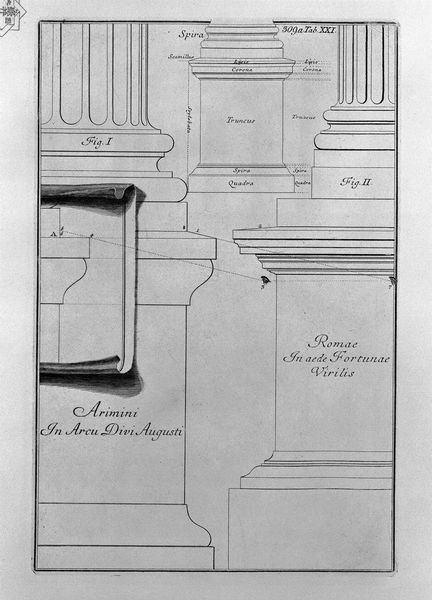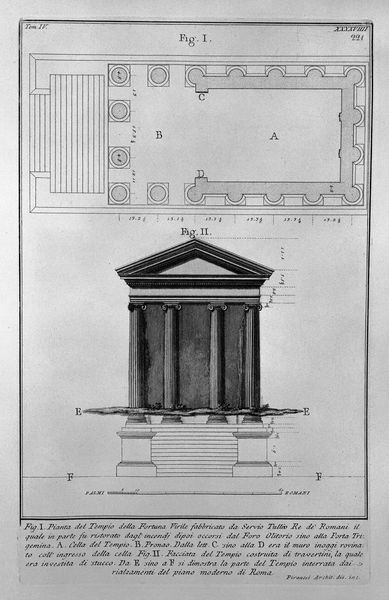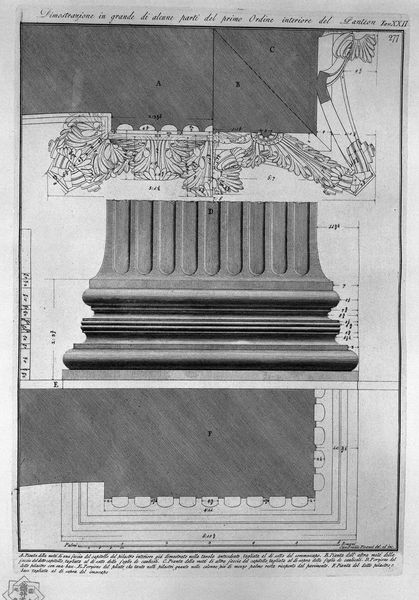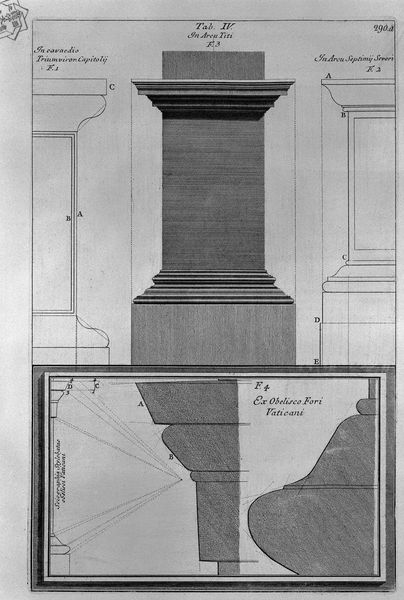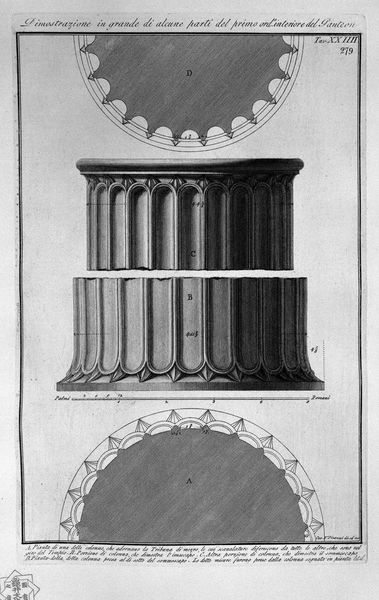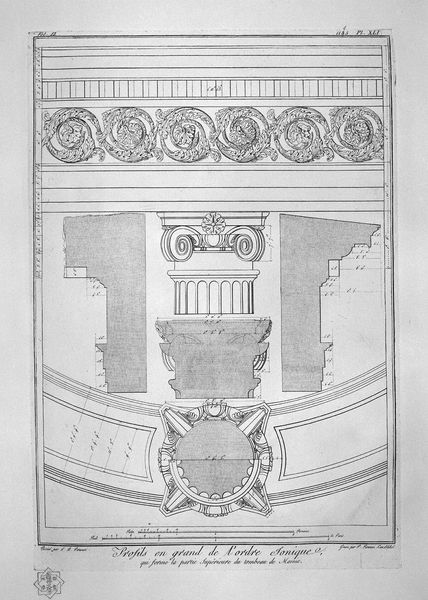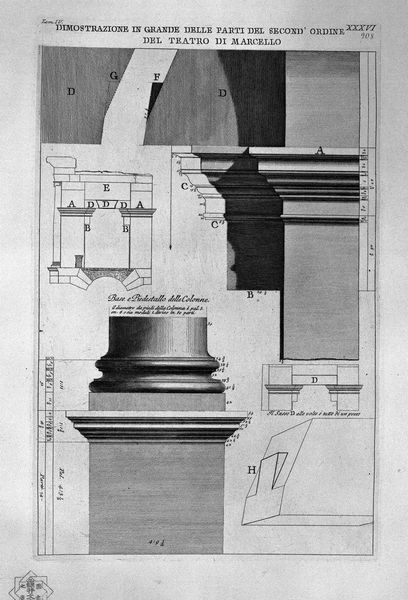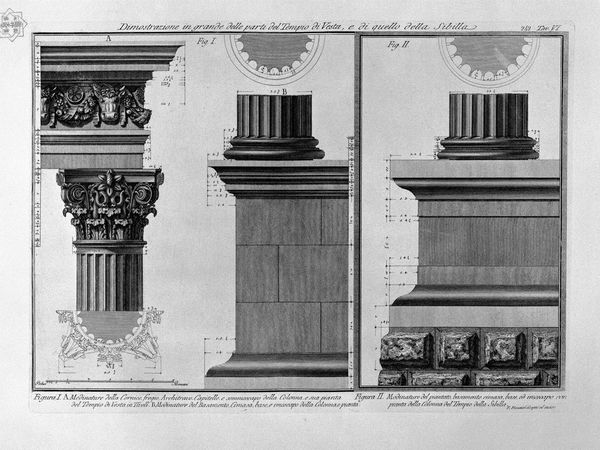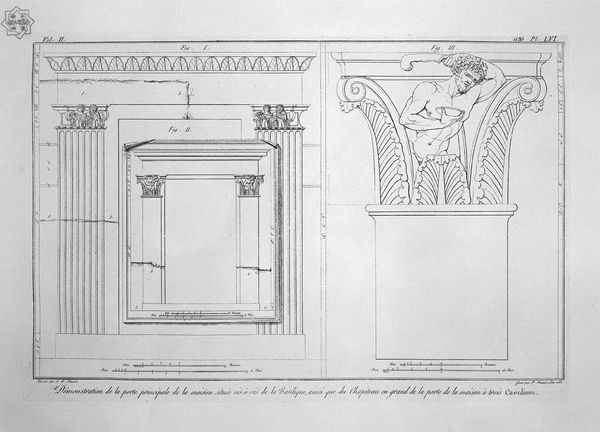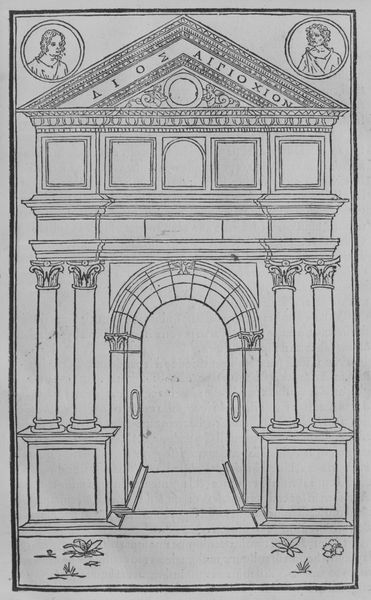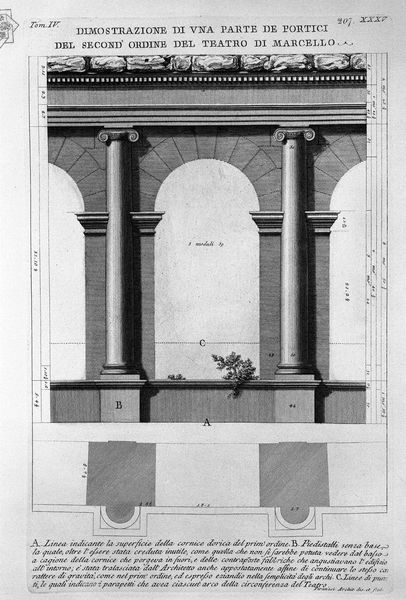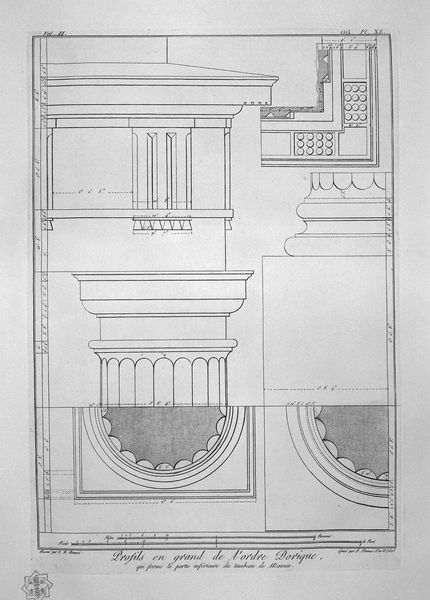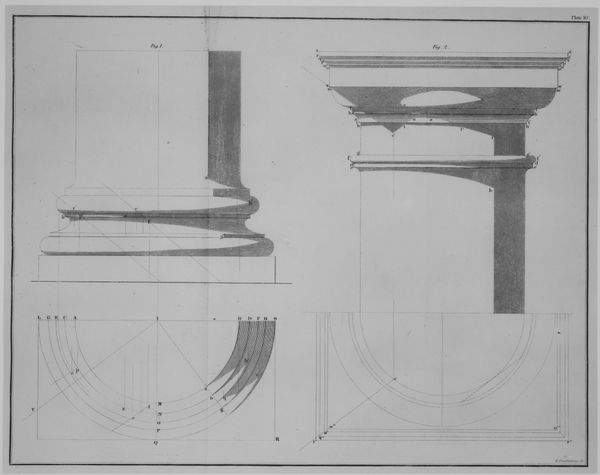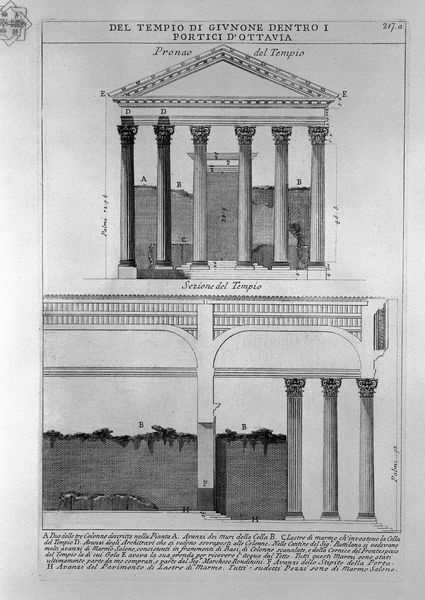
The Roman antiquities, t. 4, Plate XLIV. Vista of modinatura big frame on the opposite side of the facade of the portico of Octavia.
0:00
0:00
drawing, print, engraving, architecture
#
architectural sketch
#
drawing
#
building study
#
architectural landscape
#
architectural modelling rendering
# print
#
architecture influence
#
romanesque
#
architectural concept
#
geometric
#
column
#
arch
#
architectural drawing
#
architecture drawing
#
architectural proposal
#
architectural
#
engraving
#
architecture
Copyright: Public domain
Editor: This print, titled "The Roman antiquities…Vista of modinatura big frame on the opposite side of the facade of the portico of Octavia" is an engraving by Giovanni Battista Piranesi. It depicts detailed architectural elements with a strong emphasis on line and form. How would you approach analysing this piece? Curator: Focusing solely on the visual aspects, one is immediately struck by the meticulous detail and precision of line. The rendering is highly structured, almost mathematical. Note the systematic way Piranesi breaks down the architectural components. Do you observe any geometric relationships or proportional systems at play? Editor: I do! I see the grid-like structure overlaid on the drawing and the meticulous notations – almost like a blueprint. It feels very analytical and systematic. What’s the effect of using the column to anchor the work? Curator: The column grounds the composition, acting as a vertical counterpoint to the horizontal registers above. Its ornate capital introduces a layer of complexity, a focal point against the stark linearity of the cornice details. The use of contrasting textures, the smooth column shaft versus the intricately carved capital, engages the viewer in a play of tactile sensation. What does the lack of shading imply to you? Editor: The limited shading flattens the image, emphasizing the linear qualities and the relationships between shapes, as if to prioritize the plan over realistic depiction. This is not about representing three-dimensional reality; rather, it is about communicating structural information. Curator: Precisely. And notice how this structured approach allows for a rigorous analysis of form, devoid of romanticism or anecdotal detail. It emphasizes architecture's essence—geometry and proportion. We can focus on form in its purest state, can't we? Editor: I see what you mean! Deconstructing architecture into basic shapes becomes the language of observation. Thank you for pointing that out.
Comments
No comments
Be the first to comment and join the conversation on the ultimate creative platform.
